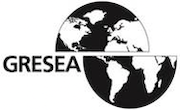Centre de documentation du GRESEA
Détail de l'auteur
Auteur Theodore E. Downing
|
Documents disponibles écrits par cet auteur


 Affiner la recherche
Affiner la recherche
| Titre : |
Avoiding New Poverty : Mining-Induced Displacement and Resettlement |
| Type de document : |
document électronique |
| Auteurs : |
Theodore E. Downing, Auteur |
| Editeur : |
International Institute for Environment an d Development (IIED) |
| Année de publication : |
April 2002 |
| Collection : |
Mining, Minerals and Sustainable Development (MMSD) num. 58 |
| Importance : |
29 p |
| Langues : |
Anglais (eng) |
| Catégories : |
Pauvreté
|
| Tags : |
Pauvreté Industrie minière PED |
| Résumé : |
The problem of mining-induced displacement and resettlement (MIDR) poses major risks to societal sustainability. Unfortunately, no global survey has assessed the scale of MIDR. Available evidence suggests that the problem is significant. Mining displaced 2.55 million people in India between 1950 and 1990. The likelihood that MIDR will be a significant issue increases as eight factors converge—as rich mineral deposits are found in areas with relatively low land acquisition costs (in the global market) that are being exploited with open-cast mining and are located in regions of high population density—especially on fertile and urban lands—with poor definitions of land tenure and politically weak and powerless populations, especially indigenous peoples. |
| En ligne : |
http://commdev.org/files/1376_file_Avoiding_New_Poverty.pdf |
Avoiding New Poverty : Mining-Induced Displacement and Resettlement [document électronique] / Theodore E. Downing, Auteur . - [S.l.] : International Institute for Environment an d Development (IIED), April 2002 . - 29 p. - ( Mining, Minerals and Sustainable Development (MMSD); 58) . Langues : Anglais ( eng)
| Catégories : |
Pauvreté
|
| Tags : |
Pauvreté Industrie minière PED |
| Résumé : |
The problem of mining-induced displacement and resettlement (MIDR) poses major risks to societal sustainability. Unfortunately, no global survey has assessed the scale of MIDR. Available evidence suggests that the problem is significant. Mining displaced 2.55 million people in India between 1950 and 1990. The likelihood that MIDR will be a significant issue increases as eight factors converge—as rich mineral deposits are found in areas with relatively low land acquisition costs (in the global market) that are being exploited with open-cast mining and are located in regions of high population density—especially on fertile and urban lands—with poor definitions of land tenure and politically weak and powerless populations, especially indigenous peoples. |
| En ligne : |
http://commdev.org/files/1376_file_Avoiding_New_Poverty.pdf |
|
Documents numériques

AvodingNewPov.pdfAdobe Acrobat PDF | | |
Accueil

Sélection de la langue
Adresse
asbl GRESEA
rue Royale, 11
1000 Bruxelles
Belgique
+32 2 219 70 76
contact
Le centre de documentation du GRESEA est accessible au public sur demande et aux horaires suivants : de 10h à 16h30, du lundi au vendredi. Les documents ne sont pas empruntables.


 Affiner la recherche
Affiner la recherche


